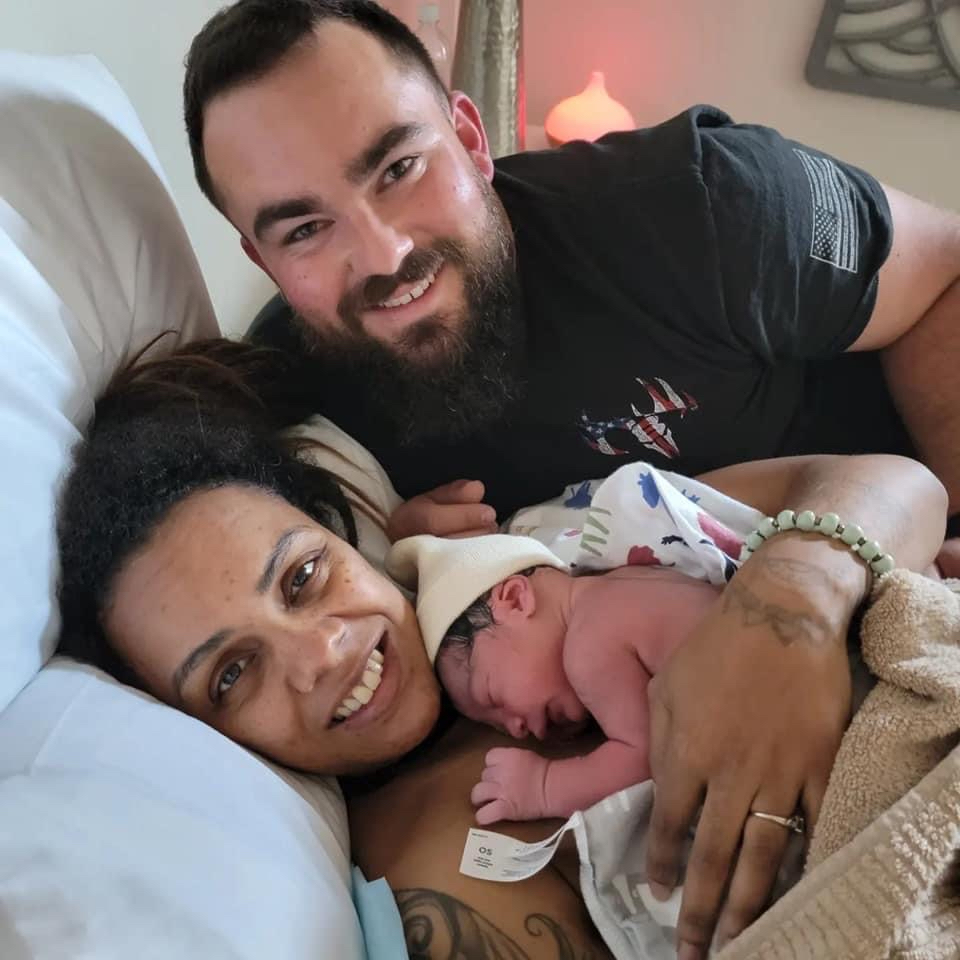Natural Birth Pain Management
Hello Mama! Welcome to Natural Birth Pain Management. This is Part 3 of our 5-part series on understanding Natural Childbirth. As you know, this short series will help cut through the conflicting information and mixed messages you may have received about natural childbirth and help you reach your own answer to the Most Important Question.

Our topics today include:
- What are the advantages of a natural birth? How does it differ from a typical hospital birth?
- How much does a natural birth cost? Does insurance cover it? How can I pay for it?
- Does a natural birth hurt more than a hospital birth? How can I manage without pain medication?
- How does a midwife compare to a doula compare to an OB / GYN? Who should I have on my natural birth support team?
- What is the single most important thing I can do to prepare for a natural birth, regardless of the care setting I choose?
By the end of Part 5 you will have your personal answer to the Most Important Question:
What is the right kind of pregnancy and birth experience for YOU Mama?
AND for your baby?
Each post in this series will cover a specific topic on the way to answering that question.
With that in mind, I hope that you were able to answer the simple questions at the end of Part 2, which focused on how to handle the finances of a natural childbirth.
Ideally you would also have completed Part 1, which focused on the primary differences between natural birth and delivering your baby in a typical hospital setting.
If you are not finished with either Part 1 or Part 2, you might consider pausing right now and getting caught up!
Again if you have questions or comments at any stage, please don’t hesitate to reach out using the ASK ME button below.
And now ...
Let’s talk about the pain.
The Main Question About Pain
In my experience as a health care provider, having attended over 1500 births, one of my mamas’ top concerns is: pain management.

Putting it bluntly, many new moms worry that a vaginal birth without pain medication will hurt more than it will WITH medication.
Today’s post will tackle that issue head on. It will help you answer THESE questions:
"Does it (natural birth) hurt more than a hospital birth?
"How can I manage without pain medication?"
Let’s start by repeating an observation I made in our Introduction.
You were quite literally MADE to do this, Mama. The body naturally releases hormones and endorphins during childbirth to help relieve labor pain, reduce stress and improve your sense of well-being.
Believe it or not, in my 25 years attending births, I have had many clients who have told me afterwards that it ‘didn’t hurt’ at all.
“WHAT?” you may say? Are you kidding me?
No, I speak the truth.
Every new mom and her experience is different and unique. Yes, some describe the experience as pain-free. Others make use of a variety of techniques that we will describe below to manage the pain they do experience.
Either way, it’s obviously not easy. Delivering a baby is one of the most challenging things you will ever do. But that is part of what makes natural childbirth beautiful. And sacred. And so empowering.
All that being said, natural birth pain management is very much a part of the the natural birth plan in most cases, whether attended by a licensed midwife during a home birth or by a medical doctor in the hospital.
6 Common Approaches to Natural Birth Pain Management
Here are some of the natural (non-medicated) approaches we utilize in my practice:
- First and by far the most frequent is the use of warm water and a waterbirth tub. The birth tub is often referred to by midwives as a ‘natural epidural.’ This natural pain relief option helps to relax the body. lower blood pressure and increase circulation, thereby easing pain. Ninety percent of my clients spend some time in a birth tub during labor, with most of those actually experiencing a water birth.
- Breath management: There is no mystery here: breathing techniques such as the practice of slow, rhythmic breathing and deep breathing, typically in through the nose and out through the mouth during active labor can help relax the body, ease tension and induce a more peaceful state of mind.
- Massage: The practice of applying gentle pressure in a variety of patterns is one of those relaxation techniques that can produce similar responses to water therapy and breath management. Massage can be administered by a partner or by a trained doula as one component of a pain management plan.
- Movement and Position Changes: This is one of the most important distinctions between a natural childbirth and one that is administered in a medical facility with a typical health care team and fixed furniture and equipment. Mom is free to move around the room, sit, stand, crouch, lean and generally find the positions that are the most comfortable to her.
- Meditation and self-talk: In our practice we help birthing women to visualize their babies, meditate on the sacred experience they are having and focus on positive affirmations of calmness and self-esteem.
- A Birthing Ball: Also known as an exercise ball or Swiss ball, is a large inflatable rubber ball. Sitting on the birth ball and gently rocking your pelvis in a circular or back-and-forth motion in different positions can help relieve lower back pain and encourage the baby to move into a more favorable position for delivery.
Natural Birth Pain Management: A Few More Ideas
Some practices offer complementary therapies that cannot really be called ‘natural,’ and yet they sometimes make the difference for the mother who wants an out of hospital (OOH) vaginal delivery:

- Over the counter pain reliever: Medications such as ibuprofen and acetaminophen, and other NSAIDs such as over the counter Naproxin, can be used to treat mild to moderate pain during labor.
- A TENS machine: Short for "transcutaneous electrical nerve stimulation," a TENS machine is a device that uses low-voltage electrical currents to provide pain relief. It consists of a small battery-powered unit connected to electrodes that are placed on the skin. The electrodes deliver electrical impulses to the nerves, which can help alleviate pain. While I do not employ TENS in my practice, I have colleagues that do.
- Nitrous oxide: More commonly used in countries such as the UK and Canada than it is in the US, ‘laughing gas’ can also be employed as a pain management method. While I prefer to stay closer to a ‘pure’ natural childbirth experience, I do have peers that have use Nitrous Oxide with good success for their clients.
Those are the basics of non-medicated pain management.
As you know, one of the primary goals of natural birth is to avoid unnecessary medical interventions. I hope you have found this overview of natural birth pain management helpful, as you consider the pros and cons of a natural childbirth for yourself and your baby.
So here’s the question, Mama: Which of these methods appeals most to you? Do any of them raise additional questions or concerns?
If so, please don’t hesitate to reach out using the ASK ME button.
In the meantime, here are the important questions to wrap up Part 3.
Questions for Part 3
Choose the statement that is MOST true for you at this point of our discussion (you can always change it later):
Statement A: I’m determined to have a natural childbirth and I will manage pain as best I can using natural methods such as those described above.
Statement B: I’m still concerned about natural birth pain management. I’m not sure an unmedicated delivery is the right choice for me.
Once again, there is no ‘correct’ answer. My goal here is to help you make the right choice for you and your baby. While I clearly believe in natural childbirth, I know it is not right for everyone.
What I want most is for you to make the best choice for YOU. That means being well informed of your options, so you can make an informed decision.
So once again, please feel free to ask me ANY question that has occurred to you as you read this letter. Simply tap the ASK ME button below.
Summary of Part 3
Now, to recap: Today’s main questions were: "Does a natural birth hurt more than a hospital birth? How can I manage without pain medication?" Between this letter and any thoughts you have chosen to share with me, I hope that we have answered both of these questions for you.
In Part 4 we will focus on the questions: "How does a midwife compare to a doula compare to an OB / GYN? Who should I have on my natural birth support team?"
When it comes to natural childbirth, having the right support is quite literally - everything. I’m looking forward to discussing this essential topic with you tomorrow.
In the meantime, thank you for completing Part 3 of our five part series on understanding natural childbirth. I'll look forward to seeing you in Part 4!
Warmly –
Paula Grady, LM CPM


